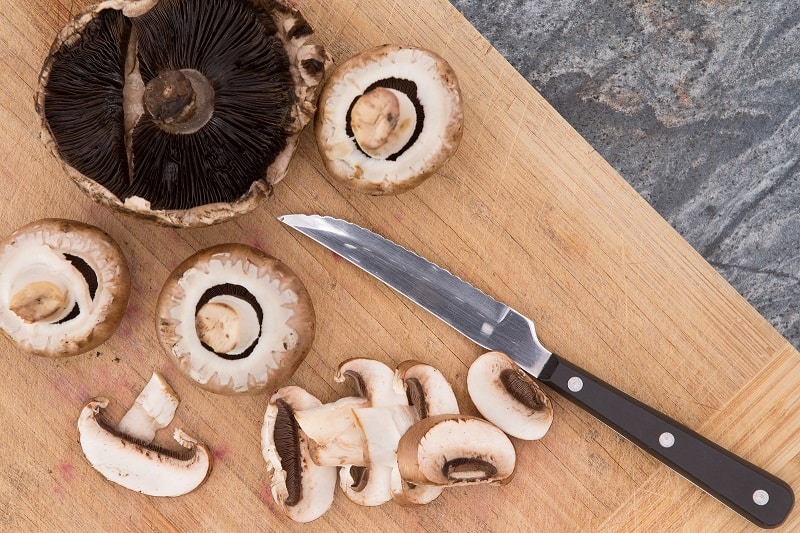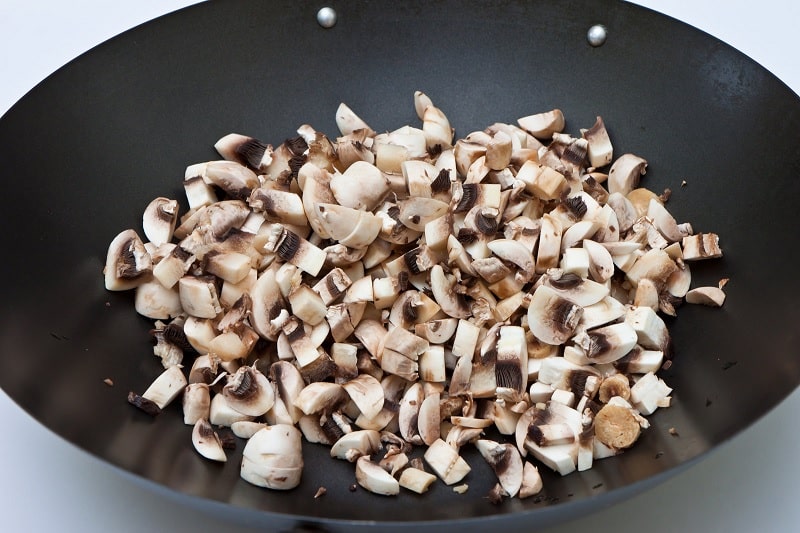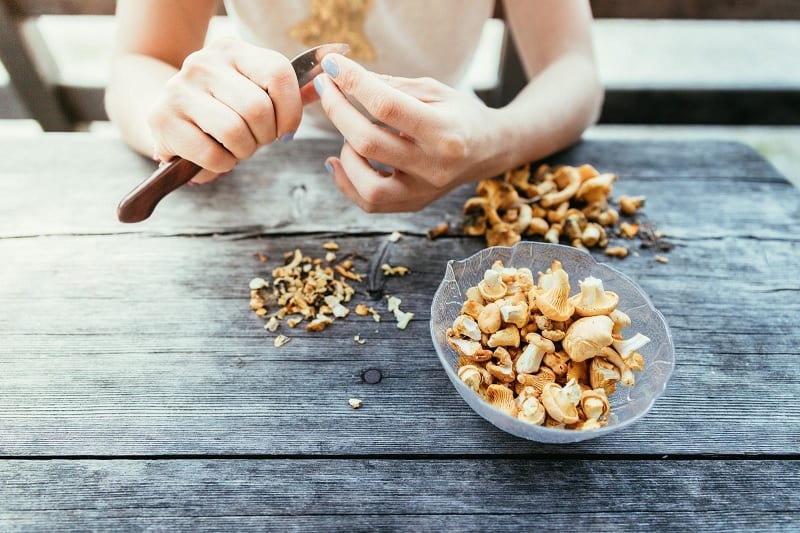Mushrooms are a fantastic vegetable used to enhance many meals. They’re also a great meat substitute for the veggies and vegans among us.
Indeed, there isn’t any other veg that compares to these edible fungi! They come in a range of funky shapes and sizes, each with unique textures, tastes, and flavours.
But for anyone that hasn’t cooked with mushrooms before, their uniqueness can make things confusing in the kitchen.
One of the mushroom-related questions we are constantly asked is this: should you peel mushrooms?
The short answer to this question is no! But for a closer look at why and other mushroom preparation tips, you’ll want to keep reading.
Do You Need to Peel Mushrooms Before Cooking?
If you’re peeling your mushrooms, stop right there! Mushrooms don’t need to be peeled before cooking.
There is no thick skin covering their surface that will ruin your meal, so peeling isn’t at all necessary.
Plus, mushroom skin is completely safe for humans to eat.
Besides, mushrooms are an awkward shape, meaning that peeling can be a difficult and time-consuming task.
Save yourself the time and effort and chuck them straight into your dish.
It isn’t just us giving this advice either. According to this post by the BBC, most professional chefs don’t even bother peeling their mushrooms. They will simply add them to their dishes after a quick wash and chop.
It doesn’t matter whether you are cooking with chestnut mushrooms or jumbo-sized portobello mushrooms—peeling is never needed, so save yourself the aggro.

Is Mushroom Skin Good for You?
Many people wonder whether mushroom skin contains more nutrients than the rest of it. After all, this is the case for many vegetables.
Potatoes and sweet potatoes are both great examples. Eating both the flesh and peel of potatoes can maximise the nutritional value of eating the food thanks to the high levels of fibre, vitamins, and minerals.
But is mushroom skin good for you? By not peeling these veg, are we gaining nutritional value from our food?
While mushroom skin certainly isn’t bad for you, the most nutritious part of a mushroom is actually its stem. Like potatoes, this part contains high amounts of fibre, along with vitamin C and copper.
On the other hand, mushroom skin doesn’t contain anything special.
However, many chefs will remove the stems before cooking. Although this part of a mushroom is packed with nutrients, it has high water content and can mean your mushrooms have a mushy texture once cooked.
Depending on the mushroom variety, some stems can also be tougher and cook more slowly. These stems must be chopped finely if you want to include them in your chosen recipe.

Should You Wash Mushrooms?
Although it isn’t necessary to peel mushrooms, it is a good idea to clean mushrooms before you eat them.
This removes any dirt and bacteria that could spoil your meal. This is particularly important if you are consuming mushrooms raw.
However, if cooking your mushrooms beware that they thrive in moisture and quickly absorb water.
Washed mushrooms, especially oyster mushrooms, will release this water as they cook. Bear this in mind, as you might want to adjust the recipe accordingly.
To avoid the issue, another option is to brush the dirt off the mushrooms to clean them rather than washing them with water.
Most cultivated mushrooms won’t be particularly dirty, so this method works well.
Any persistent bits of dirt that won’t budge can simply be cut away and discarded. Any germs or bacteria remaining on the mushroom skin will be killed during the cooking process anyway.

Hannah is a freelance content writer and self-proclaimed foodie. When Hannah isn’t sitting tapping at her laptop, you’ll probably find her in the kitchen. As an ex-chalet host, she’s used to cooking four-course meals for 10+ people and loves feeding friends and family whenever possible.


